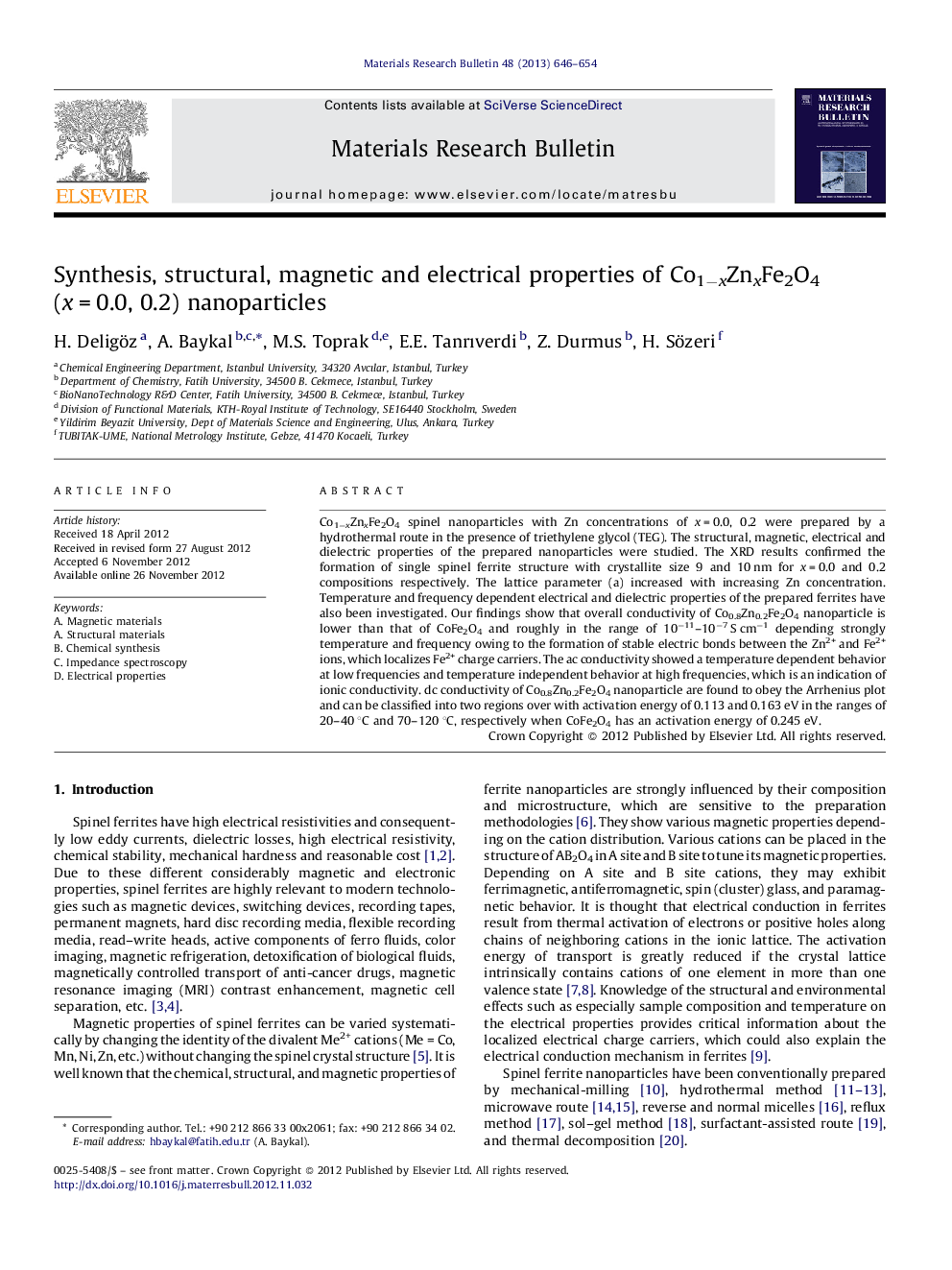| Article ID | Journal | Published Year | Pages | File Type |
|---|---|---|---|---|
| 1489882 | Materials Research Bulletin | 2013 | 9 Pages |
Co1−xZnxFe2O4 spinel nanoparticles with Zn concentrations of x = 0.0, 0.2 were prepared by a hydrothermal route in the presence of triethylene glycol (TEG). The structural, magnetic, electrical and dielectric properties of the prepared nanoparticles were studied. The XRD results confirmed the formation of single spinel ferrite structure with crystallite size 9 and 10 nm for x = 0.0 and 0.2 compositions respectively. The lattice parameter (a) increased with increasing Zn concentration. Temperature and frequency dependent electrical and dielectric properties of the prepared ferrites have also been investigated. Our findings show that overall conductivity of Co0.8Zn0.2Fe2O4 nanoparticle is lower than that of CoFe2O4 and roughly in the range of 10−11–10−7 S cm−1 depending strongly temperature and frequency owing to the formation of stable electric bonds between the Zn2+ and Fe2+ ions, which localizes Fe2+ charge carriers. The ac conductivity showed a temperature dependent behavior at low frequencies and temperature independent behavior at high frequencies, which is an indication of ionic conductivity. dc conductivity of Co0.8Zn0.2Fe2O4 nanoparticle are found to obey the Arrhenius plot and can be classified into two regions over with activation energy of 0.113 and 0.163 eV in the ranges of 20–40 °C and 70–120 °C, respectively when CoFe2O4 has an activation energy of 0.245 eV.
Graphical abstractThe variations of imaginary part of dielectric permittivity (ɛ″) of TEG@Co1−xZnxFe2O4 nanocomposite as a function of temperature and frequency for (A) x = 0.0 and (B) x = 0.2.Figure optionsDownload full-size imageDownload as PowerPoint slideHighlights► Nearly monodisperse ZnxCo1−xFe2O4 nanocomposite were prepared via hydrothermal method. ► The ac conductivity showed a temperature dependent behavior at low frequencies. ► dc conductivity of Co0.8Zn0.2Fe2O4 nanoparticle are found to obey the Arrhenius plot. ► Also these materials may be used in electronic devices and microwave devices.
